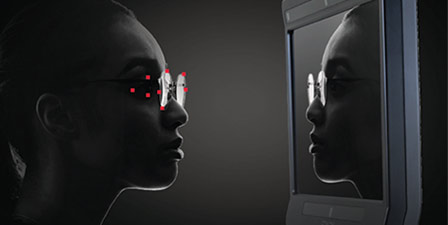There has been a huge increase in the number of children and young adults who we see for eye exams daily. With this increase, I have found that there are three categories of patient parents, and all of them require a certain style of approach. Learning to communicate well with the different parenting styles may be difficult, but will make your day to day in the clinic much easier and more pleasant.
 We all have them, the “helicopter parents.” These are the most difficult to work with. They tend to be combative about everything. This is the parent who has done extensive research on all their child’s complaints before bringing them in. They know exactly what the problem is and how to fix it, thanks to Google. These are the parents who question all the testing you do. They answer all the questions before the patient can open their mouth. I have even had parents try to give their child the answers during the refraction. I had a mother just the other day explain to me how experienced she is with wearing contacts, that she will be training her son on how to place and remove contacts properly, and that she wishes to choose the brand of lens. These parents are the ones you must kindly ask to back off; that I prefer the patient speak to me. The patient needs to tell me the problems they are having. I have found that redirecting the conversation back to the patient instead of the parent shows the parent that they are there in a supervisory position only. I like having parents involved, just not in control of the exam. In most cases you will have to give them a diagnosis other than what they expected. It may not be what they want to hear. Be straightforward and willing to give documentation to best describe the child’s diagnosis. Be prepared for a second opinion request. Do not feel insulted. Sometimes, that is the best thing that can happen for your practice and the patient. When the second opinion diagnosis is the same as yours, the parent will be more comfortable with the competency of the office, and the patient will receive the care that they need.
We all have them, the “helicopter parents.” These are the most difficult to work with. They tend to be combative about everything. This is the parent who has done extensive research on all their child’s complaints before bringing them in. They know exactly what the problem is and how to fix it, thanks to Google. These are the parents who question all the testing you do. They answer all the questions before the patient can open their mouth. I have even had parents try to give their child the answers during the refraction. I had a mother just the other day explain to me how experienced she is with wearing contacts, that she will be training her son on how to place and remove contacts properly, and that she wishes to choose the brand of lens. These parents are the ones you must kindly ask to back off; that I prefer the patient speak to me. The patient needs to tell me the problems they are having. I have found that redirecting the conversation back to the patient instead of the parent shows the parent that they are there in a supervisory position only. I like having parents involved, just not in control of the exam. In most cases you will have to give them a diagnosis other than what they expected. It may not be what they want to hear. Be straightforward and willing to give documentation to best describe the child’s diagnosis. Be prepared for a second opinion request. Do not feel insulted. Sometimes, that is the best thing that can happen for your practice and the patient. When the second opinion diagnosis is the same as yours, the parent will be more comfortable with the competency of the office, and the patient will receive the care that they need. You have the “laid back parent.” This is the parent who has their child fill out their own paperwork, go into the exam room alone, and at times they don’t even care if the doctor confers with them about their child’s examination. These are parents who are easy to deal with, but you also must make sure that they take their child’s issues seriously. I agree that kids need to become comfortable with filling out paperwork. I also agree that you want your child to be comfortable around doctors. But, typically most children are poor historians, and they may not have the best understanding of their treatment plan so a parent or adult needs to be involved. These patients are the ones who will need some follow up care, even if it is just a phone call. If you show more concern, it’s more likely the parents will be to show more concern. These will be the children who over wear their contacts or never wear their glasses because no one is there to make them do the correct thing. Written directions are always a great idea, but they are a must in this situation.
Last, but not least, the “I am normal” parent. These are the parents I love. They have helped fill out the paperwork, they may not hold the patient’s hand during the pretesting or the examination, but they have a real concern for their child’s situation. They have an effective communication with the doctor and staff. These are the patients you will see on a yearly basis, and they will wear their glasses or contacts as prescribed in most cases. These will be the parents who are the most responsive and the easiest to communicate and work with.
No matter the situation, the patient comes first. Their concerns and needs are the most important. Communicating appropriately with the distinctive styles of parents is critical. You want to make the patient and the parent comfortable and happy with the treatment and care that they receive. Remember, you will have a variety of parenting styles that will come through the office. Each one must be treated a certain way. Stay calm, be well organized, and if you don’t have the answer for a question they have, find someone who does so the parents and patients leave with the best knowledge and care available.












